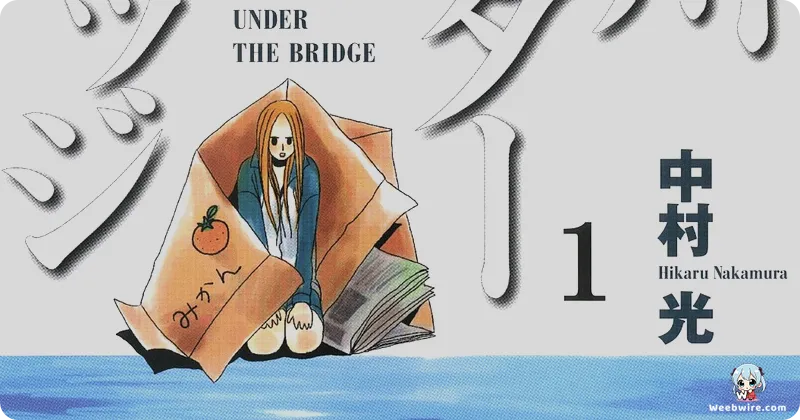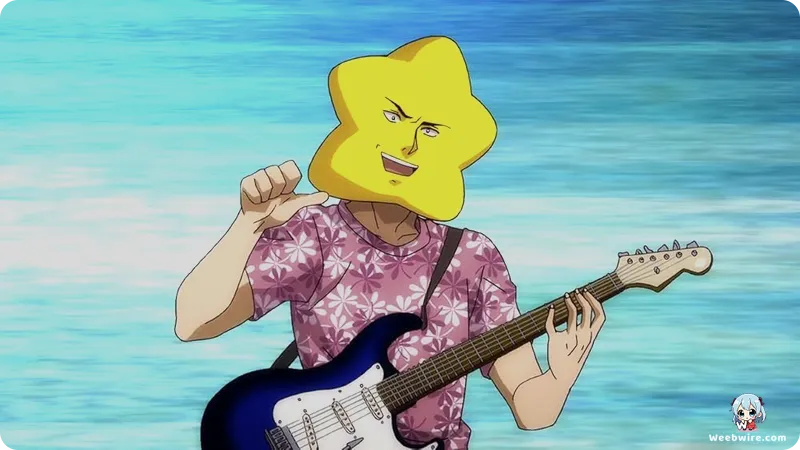The Eccentric Oasis: Why 'Arakawa Under the Bridge' Remains a Cult Classic

© Shaft, Hikaru Nakamura, Square Enix | www.animenewsnetwork.com
Since its debut in April 2010, Arakawa Under the Bridge has captivated audiences, carving out its own niche in the anime landscape with a truly unparalleled blend of surreal comedy, heartwarming romance, and a cast of characters so eccentric they defy easy categorization. Far from a conventional slice-of-life narrative, Arakawa thrives on the absurd, masterfully brought to life by Studio Shaft, a name synonymous with groundbreaking animation and a distinctive visual signature. While its quirky premise is widely recognized, a deeper dive reveals a treasure trove of fascinating insights and behind-the-scenes brilliance that solidifies this series' status as a beloved cult classic.
The Unconventional Premise
At its heart, the story introduces Kou Ichinomiya, a young man meticulously groomed to never owe anyone anything – a principle that dictates his every move. His perfectly ordered, germaphobic existence is hilariously upended after a near-fatal fall from a bridge leaves him indebted to Nino, a mysterious, tracksuit-clad girl who staunchly claims to be a Venusian. To settle this unconventional debt, Kou is compelled to relinquish his life above ground and integrate into the bizarre community thriving beneath the Arakawa Bridge. This initial, utterly unique setup lays the groundwork for a narrative that consistently shatters expectations, playfully challenging societal norms and our very concept of 'normalcy.' The series brilliantly explores the clash between Kou's rigid, capitalist mindset and the free-spirited, often illogical world of the riverbank residents, creating a rich tapestry of comedic situations and unexpected emotional growth.
Shaft's Signature Style: A Perfect Match
A pivotal element in Arakawa's distinctive identity is undoubtedly Studio Shaft's unparalleled artistic touch. Renowned for their signature visual language—from the iconic 'Shaft head tilt' and abstract, often minimalist backgrounds to their rapid-fire editing—their animation style acts as the perfect conduit for Hikaru Nakamura's original manga. Shaft didn't merely adapt Arakawa; they enthusiastically embraced its inherent weirdness, amplifying both its comedic timing and its pervasive surreal atmosphere. Mundane scenes often explode into vibrant, psychedelic imagery during character monologues or emotional climaxes, transforming simple moments into visual gags. This profound artistic synergy was critical; a more conventional animation approach would likely have diluted the show's peculiar charm, but Shaft's bold aesthetic provided the ideal canvas for the riverbank residents' outlandish antics, making every frame a visual delight and an extension of the series' unique humor.
Hikaru Nakamura's Visionary Genius
The foundational genius of Arakawa originates with Hikaru Nakamura, the visionary manga artist. Her distinctive, often deceptively simple yet profoundly expressive character designs, coupled with her extraordinary knack for crafting genuinely bizarre scenarios, form the bedrock of the series' immense appeal. Nakamura possesses an uncanny ability to create intensely individualistic characters, a talent brilliantly showcased in Arakawa. Each resident under the bridge represents a stereotype pushed to its most extreme, only to be subverted with delightful irony. This reflects her unique brand of humor, also evident in her other widely acclaimed work, Saint Young Men, a testament to her remarkable creative range and a delightful discovery for fans of her distinct comedic voice. Her ability to blend the mundane with the utterly fantastical is what truly sets Arakawa apart.
The Eccentric Cast of Characters
A closer look at the characters themselves unveils layers of delightful oddity. Nino, for instance, maintains her unwavering conviction of being a Venusian with absolute sincerity, yet her deadpan delivery and actions are a constant source of hilarity. Her name, a clever nod to the number on her tracksuit, is a subtle stroke of the series' inherent silliness. Her peculiar affinity for fish, juxtaposed with moments of surprising profound wisdom, crafts a truly unique and endearing romantic lead. Kou, affectionately rechristened 'Ric' by the Village Chief, undergoes a gradual yet profound transformation from a highly strung capitalist into someone who discovers genuine value and belonging within this most unconventional of families. His meticulously logical internal monologues provide a side-splitting contrast to the illogical world he now inhabits.

© Shaft, Hikaru Nakamura, Square Enix | m.imdb.com
The Village Chief, who steadfastly insists he is a kappa, perhaps stands as the most iconic symbol of the bridge's extraordinary community. His elaborate costume is never questioned, seamlessly becoming an intrinsic part of his identity. This unwavering commitment to his persona generates immense comedic value while subtly hinting at a deeper freedom – the liberty to embody any identity, unburdened by societal judgment. Then there’s Hoshi, the melodramatic, star-masked musician whose unrequited affections for Nino fuel his bizarre, often off-key, musical compositions. His exaggerated reactions and relentless attempts to impress Nino make him a perpetual fount of laughter. Sister, the formidable, cross-dressing ex-military priest with an alarming trigger finger but a surprising soft spot, particularly for Maria, introduces another layer of unpredictable humor. Maria herself, the beautiful and outwardly sweet farm owner, proves to be a master of emotional manipulation, deriving sadistic pleasure from verbally tormenting the male residents – a truly one-of-a-kind character who consistently keeps viewers guessing. Each character, no matter how outlandish, is given depth and purpose within the riverbank's unique ecosystem.
The Riverbank: A Character in Itself
The Arakawa riverbank transcends mere setting; it functions as a character in its own right. It serves as a sanctuary for those cast aside by conventional society, a place where rules are self-defined, and individuality is not merely tolerated but fervently celebrated. This unique ecosystem fosters an unconventional sense of family, where every member, regardless of their strangeness, finds profound acceptance and purpose. The river's ceaseless flow subtly mirrors the characters' lives – perpetually moving, adapting, and charting their own course beyond the rigid confines of conventional society's banks. It is a place of liberation, where the absurd becomes the norm, and true happiness is found in embracing one's authentic self.
Profound Themes Beneath the Absurdity
Beyond its relentless comedic onslaught, Arakawa Under the Bridge subtly delves into remarkably profound themes. It presents a comedic yet insightful meditation on the true essence of family and belonging, positing that these vital connections are not dictated by blood or societal norms, but forged through shared experiences and mutual acceptance. The series playfully critiques the inherent absurdity of the 'normal' world above the bridge, starkly highlighting the often-suffocating pressures of capitalism and societal expectations, contrasting them sharply with the liberating chaos of life under the bridge. Furthermore, it beautifully portrays an unconventional romance, where the acceptance of each other's most peculiar quirks becomes the bedrock of a deeply endearing relationship, proving that love can blossom in the most unexpected places.
The Stellar Voice Acting Ensemble
The stellar voice acting ensemble also warrants immense praise. The cast, featuring luminaries such as Hiroshi Kamiya (Kou), Maaya Sakamoto (Nino), Takehito Koyasu (Village Chief), and Tomokazu Sugita (Hoshi), breathed vibrant life into these already vivid characters with impeccable comedic timing and surprising emotional depth. Their performances are indispensable to the show's overwhelming success, making even the most outlandish lines feel perfectly organic within the whimsical Arakawa universe. Their dedication to their roles elevates the humor and emotional resonance, making the characters truly unforgettable.
Live-Action Adaptations: A Testament to Impact
Finally, a lesser-known but equally captivating fact for international fans is the series' venture into live-action adaptations. Arakawa Under the Bridge garnered sufficient popularity in Japan to inspire both a live-action drama series in 2011 and a feature film in 2012. Both adaptations faithfully captured the quirky essence of Nakamura's manga and the anime, underscoring the significant cultural impact and enduring appeal of her unique vision in its native country. For those who relish humor that boldly pushes boundaries and characters that joyfully defy definition, Arakawa Under the Bridge remains an utterly delightful and surprisingly insightful journey into the heart of delightful eccentricity, a true gem in the anime landscape.
Credits
Arakawa Under the Bridge
Author
Hikaru Nakamura
Cover Art
Shaft
Studio
Shaft
Publisher
Square Enix
Producers





